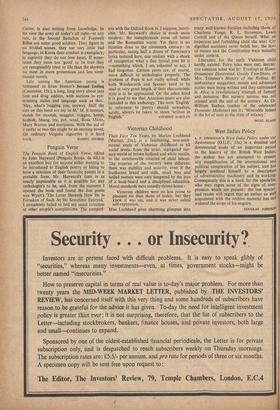Victorian Childhood Their First Ten Years, by Marion Lochhead (Murray,
21s.), is a fascinating, non-senti- mental study of Victorian childhood at all social levels, from the strict, segregated nur- sery world of brown holland and white muslin, to the unbelievable miseries of child labour. The miseries of the nursery were different; there was stability and security, even if the loathsome bread and milk, small beer and boiled mutton were only tempered by the joys of a back-board and a disciplined education. Moral standards were soundly driven home :
Victorian children were no less prone to pleasant sin than those of today; but they knew it was sin, and it was never called self-expression.
Miss Lochhead gives charming glimpses into many well-known families including those of Charlotte Yonge, R. L. Stevenson, Lewis Carroll and of the Queen herself. What an imperious and forbidding child she was! Un- dignified accidents never befell her; the laws of nature and the Constitution were stoically under control.
Literature for the early Victorian child hardly existed. Fairy tales were out; instruc- tive common sense was in : Evenings at Honte, Ornaments Discovered, Goody Two-Shoes, or Mrs. Trimmer's History of the Robins. BY mid-century magazines, novels and adventure stories were being written and they culminated in Alice, a revolutionary triumph of fantasy and nonsense. But nursery tension was not relaxed until the end of the century. As Dr. William Buchan (author of the celebrated Domestic Medicine) put it: 'Miserable indeed is the lot of man in the state of infancy.'
IRENE SLADE


































 Previous page
Previous page